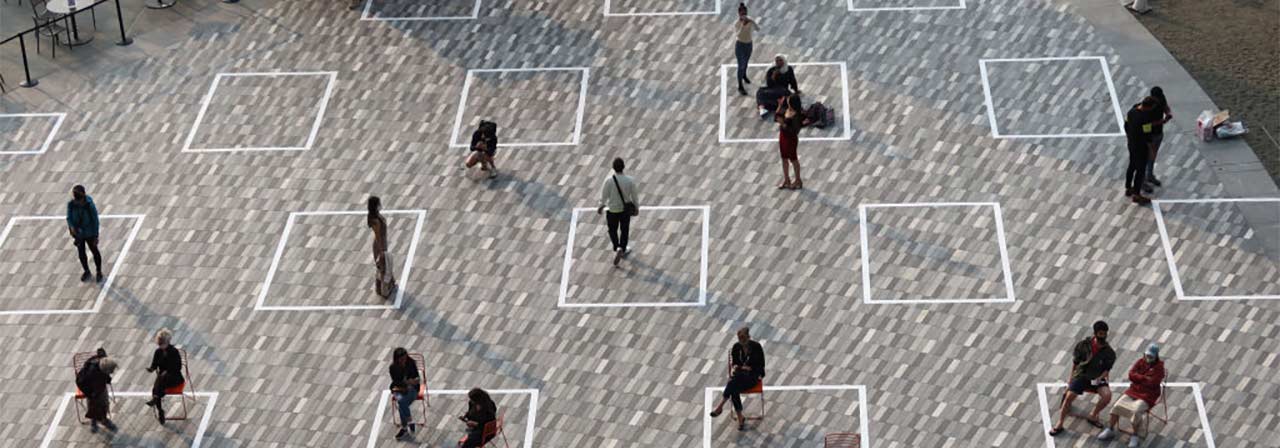How 2020 changed real estate (and how it didn’t)
Shopping, work, travel: In a turbulent year, commercial real estate was at the center of big changes
The pandemic left hardly any business or industry untouched, but real estate was front and center for many of the biggest shifts.
The offices where we work, warehouses facilitating the boom in online-shopping, hotels and malls that went quiet during travel restrictions and lockdowns: these sectors became a cornerstone of idle chats well beyond commercial real estate circles.
But other parts of life and business have continued apace. Sustainability initiatives are forging ahead. Interest rates are low, and demand for commercial real estate continues to rise. Offices will change, but workers are eager to head back.
As the world looks ahead into 2021, it’s worth looking back at a year that changed real estate, and crucially at trends that have largely stayed the course.
What’s changed?
Shopping
E-commerce accelerated massively in 2020 as shoppers stuck at home flocked online.
“What we’ve seen is a permanent shift in consumer habits,” says Michael Ignatiadis, Head of Supply Chain Consultancy, Asia Pacific, at JLL. “And this means that e-commerce and logistics needs to transform at an incredible pace to keep up.”
Compared to traditional logistics operations, e-commerce is more labor intensive, and requires three times more warehouse space. That’s part of the reason behind increased investor demand for industrial real estate across the world.
Demand in particular rose for urban properties that can fulfill consumers’ insatiable thirst for same-day delivery. Most cities weren’t designed for this, so the sector has had to pivot. For example, stores have become distribution hubs.
“Retailers, primarily grocers, are becoming large vending machines,” Ignatiadis says. “They’re looking for much needed space to accommodate e-fulfilment operations at the back of store.”
Travel
From business trips to tourism, 2020 saw a dramatic decline in travel. For instance, U.S. airline traffic was down 62% in October from the year earlier, according to the country’s Department of Transportation. And that was the smallest decrease since March.
This made for a difficult year in the hospitality industry. While there is little doubt that travel will come back strong, in the meantime operators have had to get creative, for instance by looping themselves into the remote-working culture.
Looking for more insights? Never miss an update.
The latest news, insights and opportunities from global commercial real estate markets straight to your inbox.
Another change is set to be the size of rooms, says Geraldine Guichardo, Director of Research, Hotels, at JLL. Over the last decade average room sizes shrunk 31 percent, according to JLL data. But now, as guest preferences change, spaces are likely to expand.
Bigger rooms “can provide a flexible environment for telecommuting, room for exercise and space for longer-term stays,” she says. “This will form a new guest-experience paradigm of ‘work, stay and play’.”
Work
A year of mass lockdowns that forced people to work from home showed many roles can be done remotely, spurring companies to adopt new, hybrid working models.
The shift was already underway at many businesses, but like so many things, it accelerated due to COVID-19.
“Companies of all kinds are seizing a once-in-a-lifetime opportunity to change the office model and lean into workforce preferences,” says Marie Puybaraud, director of global research at JLL.
What’s more of the same?
Work
At the end of the day, many aspects of work won’t change. People will still need to collaborate, innovate, and liaise with managers on projects and their careers. These are some of the reasons why people missed the office, and it’s why for many offices will retain a central role in corporate life.
A survey of 2,000 office workers in 10 countries showed nearly three quarters of respondents still want the ability to come into an office, while 70 percent consider the office as the best place for team building and connecting with management.
Investment Opportunities
Low interest rates
Interest rates at central banks have been at record lows for over a decade, and in 2020 the Federal Reserve sent its key rate back to effectively zero.
With the low-rate environment expected to persist in the coming years alongside supportive government stimulus, allocations to commercial real estate are expected to continue rising.
“Real estate valuations are determined in relation to a risk-free rate and the decline in the risk-free rate will normally pressure market risk premiums to compress,” says Andrew Ballantyne, head of research, Australia, JLL.
Sustainability efforts
During economic downturns, projects around the environment and corporate responsibility often lost ground as companies focused more intently on the bottom line. But now companies have renewed their focus on sustainability efforts.
“COVID-19 heightened the need for resilience,” says Richard Batten, JLL Chief Sustainability Officer at JLL. “Not just the operation of the buildings and transportation but also for the people working, living and thriving in our cities. COVID-19 proved what existed previously just did not work; it proved we all need to build back better, build back greener.”
Contact Michael Ignatiadis
Head of Supply Chain Consultancy, APACWhat’s your investment ambition?
Uncover opportunities and capital sources all over the world and discover how we can help you achieve your investment goals.




